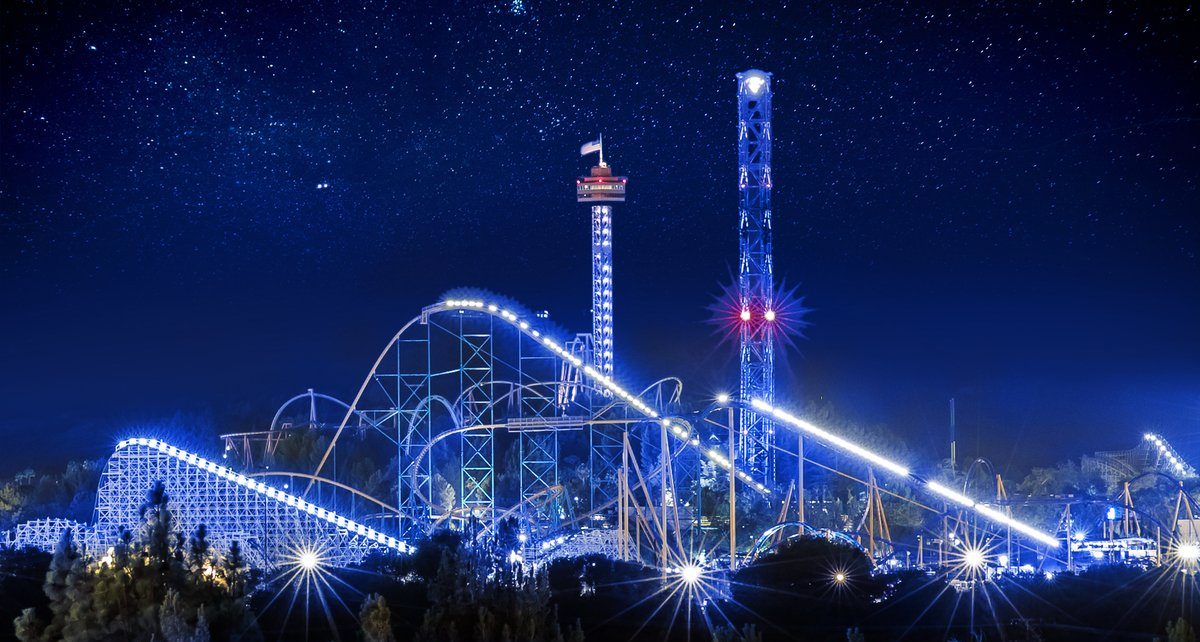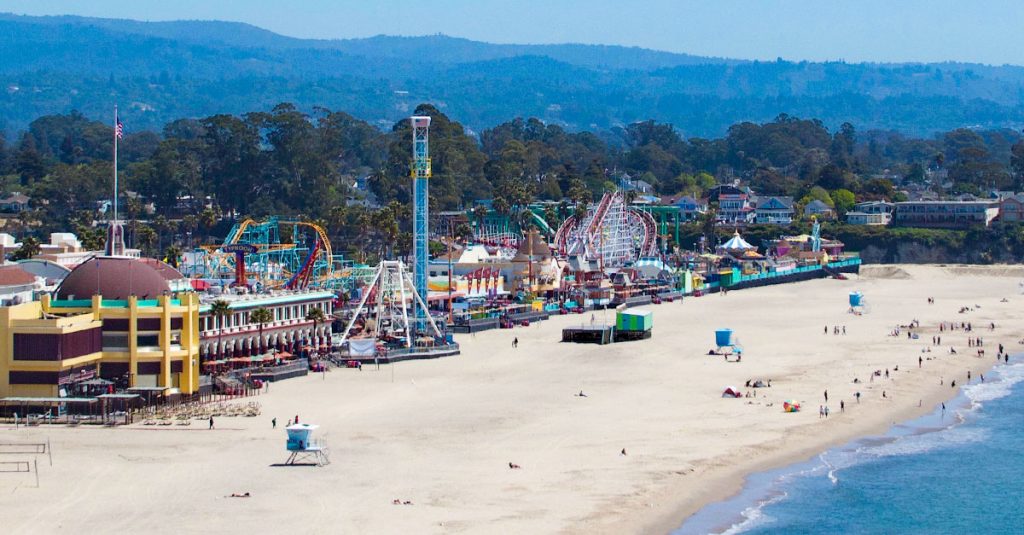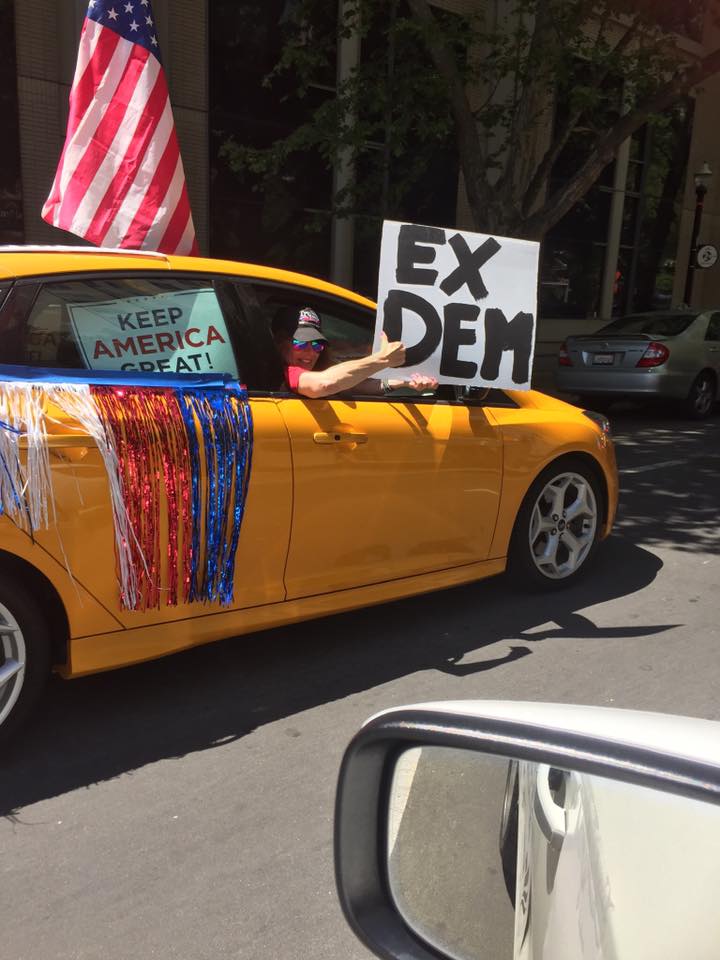
Six Flags Magic Mountain. (Photo: Twitter)
How the Major Attraction Lockdown Is Hurting Even More Californians and Businesses
Theme parks, sporting event shutdowns are beginning to show trickle down economic strife
By Evan Symon, November 11, 2020 6:00 pm
On Tuesday, all three Disneyland hotels announced that no more room reservations could be made through the end of the year.
The announcement by Disney, while not unexpected, made Disney hotels only the latest business to be severely affected by the theme park and stadium closures by the Californian Government.
The announcement also shows that many periphery businesses dependent on stadium and theme park business are only going to suffer more in the coming months as state and local lockdowns aren’t allowing the businesses to do what they need to do to survive and prevent more layoffs.
Theme parks and stadiums have a huge impact on other jobs around and outside their confines, and created more lost jobs and more lost revenues than what the original large theme park or stadium shutdown did.
“Disney letting go 10,000 people is really only the tip of the iceberg,” explained Los Angeles-based economist Andrew Glover. “It’s part of Governor [Gavin] Newsom denying Disneyland to reopen, mostly because of COVID-19 and fear over spreading it.”

“But many don’t look beyond that. So when no tourists are coming in, all other businesses in the area go dry. There are obvious ones, like hotels, like we saw yesterday, and restaurants. But think of all the other little ones. All the contracts with private security firms, laundry washers, truck drivers for product transport, pharmacies and grocery stores that relied on tourist traffic, gift shops, Airbnb operators, Uber and Lyft drivers, and everyone that relied on Disney traffic. It even goes down to the trades, as many plumbers, carpenters, and others now have less work due to less usage and less needed maintenance.”
“It’s not just the 10,000 fired. We’re looking at thousands, maybe over 10,000 more, who now either have drastically less work or no work or guests at all.”
“And that’s just from one theme park remaining closed. Look at how many businesses are around Dodger Stadium in LA. Or stadiums across California. Theme parks across California. Other closed tourist spots across California. This isn’t isolated or anything like that. It all adds up to a significant chunk of the population of California being affected negatively.”
“It’s following the same pattern as small Midwestern and Southeastern cities that were propped up by one factory or a single industry that suddenly pulled out. It’s not as drastic for most since there are still enough industries and jobs to keep things going, but in the immediate areas it’s devastating. And unlike those factories that shut down because of high labor costs or whatever the case was, it wasn’t economics doing this to California. It’s the government deliberately choosing to allow this to happen. Granted, it is being done on the name of public safety, but it’s hard to convince those people that it’s a good think when they’re on the brink of homelessness.”
Businesses around stadiums, theme parks notice a dramatic loss of business, high number of layoffs
The Globe reached out to different businesses around major attractions across California and found that the lockdown orders have been equally devastating around the state.
“So, half my staff is gone,” said Christopher Patterson, a restaurant owner nearby the Staples Center. “No games and lockdowns means no customers coming around. We do have outdoor eating, but this is downtown LA. Not many people live here outright. We depended on games to fill this place up, but instead we’re depending on the little business traffic and the few carryout totals.”
“I do agree this trickles down. The state shut the teams out from having fans, so it hurt us. We have less business, so we have to hire fewer people, and also get less supply and reduce other costs. And that hurt others down the line.”
Anna Robina, who runs a small diner outside a Los Angeles area theme park, also agrees.
“They shut down, and that mean guests, especially the ones who came from all the nearby hotels, including an expected bump from some being finished, never came,” said Robina.
“I had to fire three people already this year. Not so much, but for this area, it’s still a lot.”
“You know who the biggest group was so far this year at my outside patio? A large contingent of real estate appraisers who were going around checking out all the recently vacated properties nearby due to the pandemic, but also due to people fired from the theme park moving away.”
“I lived in Detroit during the Great Recession and it just felt so familiar to that.”
In Northern California, the results were the same.
“Everyone’s suffering as a result,” noted Lucille Kramer, who owns a shop geared toward tourists near the Santa Cruz Boardwalk. “We just had to close down again because of the tier change. Seriously, we cried out to Newsom for months, finally convinced him, then his tier reopening system fails us again.”

“To give you an idea of how bad it is, I had to let people go in August when it all became too much, I rehired some of them last month in anticipation for a reopening, then, after only days, it closed again and now I have to let them go again.”
“And that means the same with vendors and other businesses.”
“So, it not simple hiring and rehiring issues trickling from whether the boardwalk is open. It’s much worse, because we will be going up and down in hiring in tune with where the tier is at for reopening. We’re going to have on and off hiring, which is just going to wreck havoc with unemployment and our livelihoods. And that’s all affected businesses.”
“Everyone’s affected by this. It’s not just the closed business, you know? It’s everyone. We’re all not really big Gavin Newsom fans right now to say the least. He and his people caused this and is making our lives hell.”
A new normal for theme parks, stadiums
And according to economists like Glover, that could become a new normal until a vaccine comes up.
“That is definitely likely,” agreed Glover. “Say if LA County gets to the tier where they can reopen stadiums and theme parks, but go through several mini-waves like what happened 100 years ago with [Spanish Flu]. Stadiums and theme parks will have have mass rehirings and mass layoffs like a light switch depending on the change under the current system. And that means sudden shifts to restaurant capacities, bar openings, hotel capacities, and so many other peripheral businesses. And businesses can’t thrive on week-to-week contracts over the long term.”
With so many dependent businesses on stadiums and theme parks, the California shutdowns have done more than simply lose the main company millions and force them to layoff hundreds, if not, thousands of employees. They’re drastically hurting hundreds of independent small businesses and chain businesses that depend on them as well.
- ‘Fix Prop 47’ Initiative Receives Over 900,000 Signatures – Qualifies for November Ballot - April 18, 2024
- Google Fires 28 for Anti-Israel Sit-in at Work - April 18, 2024
- California Retains Title As World’s 5th Largest Economy - April 18, 2024





Say it again… This dipstick Democrat governor is following the DCC and CCP marching orders to upend the economy at the state and national,levels to overthrow President Trump, and for political purposes…
All for a flu virus derivative with a 99% survival rate …
Wake the hell up, people and recall this jackwagon and Jared Polis in Colorado…
Cases don’t mean Jack, it’s the FLU…